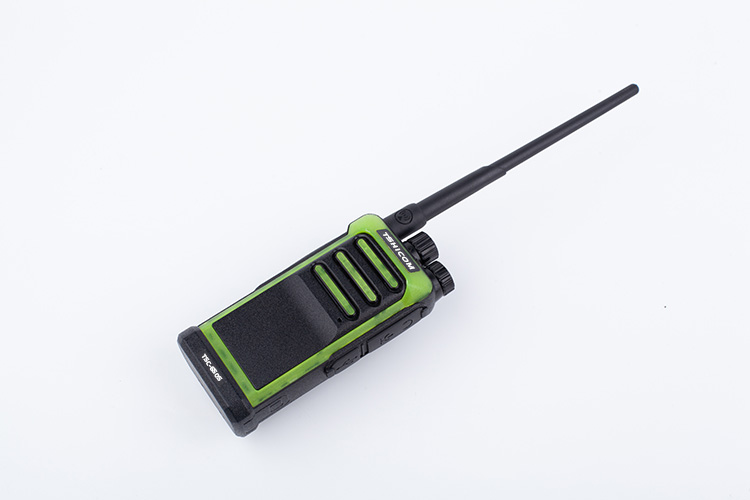Walkie talkie Function Terminology Explanation
Walkie talkie is a tool for two-way mobile communication that does not require a network and operates by setting a specific frequency for communication. It does not incur call charges and is suitable for relatively fixed and frequently used situations. Walkie talkie functions include monitoring, scanning, priority channel scanning, deleting/adding scan channels, voice-activated transmission, transmit time limit, power-saving mode, high/low power selection, transmit inhibit, squelch levels, CTCSS/CDCSS, 2-TONE/DTMF selective calling, reverse frequency, off-network mode, auto-answer, emergency alert, patrol registration, key lock, battery level indication, illumination, clone function, modulation, audio, carrier, channel and channel spacing, 2-TONE, 5-TONE, CTCSS, CDCSS, and DTMF. Let's explore the meanings of these functional terms together.

Walkie talkie Function Terminology Explanation
1. Monitor
A listening method used to receive weak signals. By pressing a dedicated key to forcibly connect to the signal reception channel, the operator discerns faint sounds in the speaker to achieve the purpose of listening.
2. Scan
A listening method used to hear conversations on all channels. By pressing a dedicated key, the receiving circuit sequentially receives each channel for a certain period to listen to signals on those channels. If each channel reception time is 100ms, it can scan ten channels per second, with a scanning speed of 10 ch/s.
3. Priority Channel Scan Function
During scanning, prioritizing the scanning of a set priority channel.
4. Delete/Add Scan Channels
Removing or adding a channel from/to the scanning list.
5. Voice-Activated
When this function is activated, transmission can be initiated through voice without the need to press the PTT key.
6. Transmit Time Limit Function
This function is used to limit the user's transmission time on a channel, preventing damage to the walkie talkie due to prolonged transmission.
7. Power Saving Function
To conserve power and extend standby time, the walkie talkie operates in a power-saving mode where it alternates between turning off and turning on over a specific period when there is no transmission, reception, or key operation. The on-off time ratio is approximately 1:4. When a signal is received or there is a key operation, the walkie talkie immediately exits the power-saving mode and enters normal operation.
8. High/Low Power Selection Function
This function allows users to choose between high power or low power based on the specific situation.
9. Transmit Inhibit Function
When using this function, users are prevented from transmitting signals on a busy channel.
10. Squelch Levels
The strength of noise in the received signal corresponds to the strength of the signal. The range between the maximum and minimum noise is divided into several levels, each level is called a squelch level. The number of levels is called the squelch level. Users can choose based on actual conditions.
11. CTCSS/CDCSS Function
Using this function helps avoid receiving unrelated calls.
12. 2-TONE/DTMF Selective Calling Function
Utilizing 2-TONE or DTMF signaling to selectively call specific walkie talkies.
13. Reverse Frequency Function
With this function, the walkie talkie's transmission frequency and receiving frequency are swapped, and the set signals are also exchanged.
14. Off-Network Function
When using the off-network function, the walkie talkie's transmission frequency becomes the same as the receiving frequency, and the transmission signals also change to match the receiving signals.
15. Auto-Answer Function
When the walkie talkie receives a correctly encoded call, it sends a signal to respond to the caller.
16. Emergency Alert
By pressing the dedicated alert key, the walkie talkie emits a loud alarm or sends a pre-defined alert code to other handheld radios or base stations.
17. Patrol Registration
When patrol personnel arrive at a patrol point, the walkie talkie receives a query signal from the patrol registration device and automatically starts the registration process, sending its own identity information to indicate that a specific patrol member has arrived at that location.
18. Key Lock Function
Using this function prevents accidental key presses.
19. Battery Level Indication
Displays the battery level.
20. Illumination Function
Used for operating in low-light or nighttime conditions, making it possible to see the LCD display and buttons clearly.
21. Clone Function
This function allows data from one walkie talkie to be copied to another walkie talkie of the same model.
22. Modulation
Modulating a carrier signal by changing one or more parameters of a modulating signal, such as amplitude, frequency, or phase.
23. Audio
Audio refers to the frequency range of human speech, typically ranging from 300Hz to 3400Hz.
24. Carrier
The carrier is the electromagnetic wave that carries useful signals such as voice, digital data, and signaling. It is a high-frequency electromagnetic wave that is easy to transmit.
25. Channel and Channel Spacing
A channel represents the frequency value used for transmission and reception. The frequency difference between adjacent channels is called the channel spacing. Standard channel spacings include 25KHz (wideband), 20KHz, 12.5KHz (narrowband), and others.
26. 2-TONE
2-TONE signaling is composed of two audio signals, A Tone and B Tone. It involves transmitting the A Tone for a specific duration, then a pause, followed by the B Tone. This signaling method is used to select the walkie talkie to call.
27. 5-TONE
5-TONE signaling is similar to 2-TONE signaling, but it uses five different frequencies.
28. CTCSS
CTCSS, Continuous Tone-Controlled Squelch System, also known as sub-audio, is a technology that adds a frequency lower than the audio frequency (67Hz-250.3Hz) to the audio signal for transmission. When the walkie talkie demodulates the received signal to intermediate frequency, the sub-audio signal is filtered, shaped, and compared with the CTCSS frequency set in the device to determine whether to activate squelch.
29. CDCSS
CDCSS, Continuous Digital-Controlled Squelch System, serves the same purpose as CTCSS but uses a digital coding method as a condition for squelch activation.
30. DTMF
DTMF, Dual-Tone Multi-Frequency, is composed of high-frequency and low-frequency groups, each containing four frequencies. Combining one high-frequency signal and one low-frequency signal creates a dual-tone signal representing a digit. DTMF signaling has 16 codes and is used for selective calling to specific walkie talkies.

